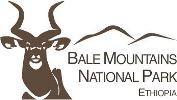Economic Valuation Of Natural Resources
Despite being valuable assets and contributing to a country’s economy, ecosystem goods and services have not, historically, been adequately represented in markets and are largely public goods. This common property characteristic has led to inefficient allocation of resources and the overuse and exploitation of natural resources to such a level that it now threatens global economic performance and a sustainable level of human wellbeing. The economic valuation of ecosystem goods and services is an important emerging area of research that allows us to assess the true contribution of ecosystems to human wellbeing. This allows more informed decisions in the allocation of limited human and financial resources. Thus, the benefits of conservation can be more adequately represented in the process of making trade-offs by both private land managers or public policy makers.
Environmental valuation is also a precursor towards a more incentive led approach to conservation through the establishment of prices, or markets, for environmental services. By marketing ecosystem goods and services, either directly or indirectly, we can reflect the true social costs to reduce market distortions and reduce the welfare losses of ecosystem degradation. The strength of this approach is that it has the potential to allow value to be realised in areas local to conservation efforts; commonly rural populations. Often heavily dependent on natural resources for their livelihoods ecosystem valuation then becomes a foundation from which local needs, activities and dependency on natural resources can be assessed. This better assessment then leads to more appropriately designed mechanisms of management, either to capture the economic values, provide incentives to conserve the resource base, or compensate for opportunities forgone. Ultimately ecosystem valuation has the potential to reduce the conflict between development and conservation goals.
This research focuses on the economic valuation of natural resources and market creation in the BMNP and wider Bale Mountains Eco-Region. The BMNP and Bale Mountains Eco-Region provide a substantial array of ecosystem goods and services. Without awareness of the magnitude of contribution that ecosystem goods and services make to the local economy, regional policy and management strategies have not adequately represented their value. Combined with a growing population and political instability, this lack of investment has led to the degradation of ecosystem health.
This study takes a utilitarian definition of value, rather than an intrinsic rights-based approach, and under this anthropocentric classification environmental values can be classified within a commonly used framework of Total Economic Value. The framework divides value into use values and non-use values and subdivides these into categories of benefits. Use value to humans consists of direct, indirect and option value. Direct-use values can be consumptive or non-consumptive and are commonly derived from goods and services by the inhabitants of the ecosystem. Indirect-use values are those that are more functional, the benefits of which often extend away from the ecosystem itself and are not obviously consumed. Option value concerns goods and services that are not used at present, but have the potential to be used directly or indirectly, in the future. Non-use value is that of continuation of the provision of a good or service even where an individual has no intention of using the resource; satisfaction in knowledge that services are present is classified as existence value, availability of goods and services to be used by future generations is referred to as bequest value, and by current generations as altruistic value. Under this framework the Bale Mountains Eco-region provides many ecosystem goods and services extending to many beneficiaries in multiple forms, examples of which are identified in Table 1.
| Table 1. Ecosystem goods and services contributing to Total Economic Value in the Bale Mountains Eco-region | ||||
| Total Economic Value | ||||
| Use Values | Non-Use Values | |||
| Direct Use | Indirect Use | Option | For Others | Existence |
| Domestic Water | Ground Water Recharge | Pharmaceuticals | Species | Endemic Species |
| Forest Products | Flood Control | Ginetic Library | Habitats | Habitat Types & Landscapes |
| Livestock Rangelands | Drought Control | Habitats | Traditional Livelihoods | Ritual Or Spiritual Connections |
| Medicinal Plants | Carbon Sequestration | Biodiversity | Culture & Heritage | |
| Cropland | Soil Formation & Maintenance | Prevention Of Irreversible Change | ||
| Fuelwood Collection | Waste Assimilation | |||
| Construction Materials | Water Purification | |||
| Honey Production | Pest & Disease Control | |||
| Coffee Production | Pollination | |||
| Recreation | Storm Protection | |||
| Tourism | Shade | |||
| Research | Wind Shelter | |||
| Education | ||||
Environmental valuation will draw attention to the economic losses of continued degradation in the Bale Mountains Eco-Region. It will inform efforts to improve resource management and encourage support from government and donors. It will also provide a base from which to identify sources of sustainable financing for biodiversity conservation, primarily through the voluntary carbon market. Alongside physical assessment of carbon stocks, research into the institutional capacity will ascertain the feasibility of establishment of such markets for environmental services. Overall, environmental valuation can greatly inform efforts to bring unsustainable resource use under control in the BMNP and Bale Mountains Eco-Region. This research may also prove a case study in environmental valuation that can be replicated across Ethiopia’s protected areas and wildlife sanctuaries.
This research was initiated by Charlene Watson towards her MSc and will be expanded into a PhD at the Imperial College of London, in collaboration with the Bale Mountains National Park, Frankfurt Zoological Society, and the Bale Eco-Region Sustainable Management Programme with funding from the Economic and Social Research Council (ESRC), Frankfurt Zoological Society, and the Bale Eco-Region Sustainable Management Programme.
